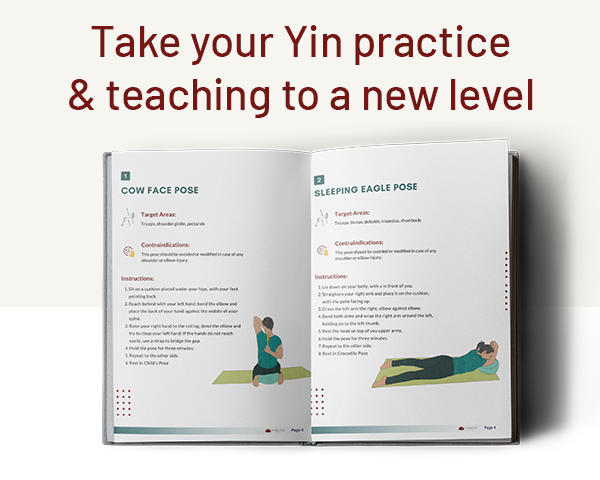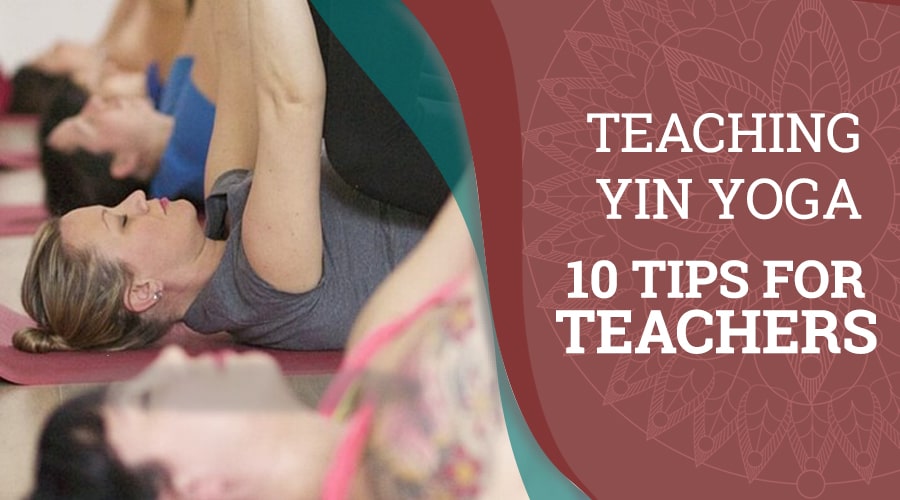Yin Yoga is a new style that has become very popular in the last decade. Teaching Yin Yoga is a very satisfying experience as you can teach it to very different kinds of students, ranging in different age groups and fitness levels. Yin Yoga classes are slow-paced. So, as a teacher, you really get the chance to observe and help your students with full attention.
In my experience, attending a Yin Yoga class is a powerful experience for most students. You will see the changes in the students and the results in increased flexibility within a few classes.
Why should you teach Yin Yoga?
- Gentle and soothing: A Yin Yoga class is a gentle and soothing class for the students as well as the teacher. After teaching a Yin Yoga class you as a teacher will also feel very calm and relaxed.
- Lifelong teaching: As a Yin Yoga teacher, you can teach throughout your life as you don’t have to be very flexible or physically top condition for demos.
- Spirituality oriented: Yin Yoga classes are spiritually oriented. So if you are more of a spiritual person than a physical these are especially suitable for you.
- Philosophical in nature: In Yin Yoga classes you get a chance to talk about philosophy and the purpose of yoga.
- Meditative class: Yin classes are slow-paced, silent, and meditative. They give chance to reflect inwards for both teacher and student.
- Noncompetitive style: Yin is an inwardly focused yoga style so the atmosphere is relaxed and stress-free.
10 tips for teaching Yin Yoga
Practicing and teaching Yin Yoga are two entirely different pairs of shoes. Sometimes people think that because Yin Yoga is a very slow-moving yoga style, it is easy to teach. Or they ask me that because they practice Yin Yoga themselves, maybe I can give them some tips on how to teach Yin Yoga? Even though Yin Yoga is a passive and slow style, it is important that as a teacher you follow a proper education. As a Yin Yoga teacher, you have an important role and below I like to share with you 10 important tips:
- Think of red, orange, and green zones
In yin, we don’t want to push the student too far in the pose as it can lead to injury. I ask them to think about the three zones of comfort:
Red – In the red zone, the student feels acute pain and is waiting to come out of the pose.
Orange – In the orange zone, the student feels discomfort but can stay in the pose for the full duration.
Green- In the green zone, the student feels no discomfort at all.
Yin Yoga is effective if you are in the orange zone during the entire duration of a pose. Being in the red zone means inviting injury and being in the green zone means you are not effectively stressing your tissue, and are actually (excluding the mental relaxation that you'd probably experience) wasting your time. When you teach Yin Yoga, make sure to remind your students of these three zones throughout the class at regular intervals, especially during challenging poses.
- Use props
Earlier I used props while teaching Yin Yoga when students could not do a pose. But later I understood that the real use of props in Yin Yoga is to use them even though the student can do the pose. Props help us to remain still and relaxed during the long holds and remove stress from areas that are not supposed to be targeted during a pose. What about the students who are very flexible? Well, then the props can be used to increase the stress of the pose. Just be careful not to overdo the props to such a degree that your students are just resting in a green zone, Yin Yoga is not Restorative Yoga.
- Proper voice
Your voice is a very important tool when teaching Yin Yoga. As Yin Yoga is a gentle and introspective class, keep your voice soft, guiding, and loving. Think like you are guiding your teenager niece to do simple stretches, so your voice is gentle but assertive. Use some modulation in your voice so it delivers the emotion and the feelings corresponding to the instructions.

Get the illustrated e-book 10 Yin Yoga Poses for the Upper Body by Ram Jain for free
- Use music or sounds to create ambiance
In my experience, it always helps to create a nice ambiance by using some gentle music or nature sounds. The music should be playing softly in the background only. It should not interfere with your voice. For this reason, I never take music with any lyrics, though sometimes I use repetitive mantra tracks.
- Don’t talk too much
Many teachers make the mistake of talking too much during a Yin Yoga class. They feel they need to give a lot of information and cues throughout the practice. But this is actually not required. In Yin Yoga classes students go inwards and enjoy the silence. When the teacher keeps on talking it becomes disturbing for them. During my teacher training courses, I explain that, as a thumb rule, you should talk for a maximum of 30 seconds in a period of one minute.
- Keep the flow
The class can feel less professional and thought-through when the sequence does not flow smoothly. Ensure that the sequence flows smoothly from one pose to the next without too many transitions. For example, in the sequence Sphinx, Snail, Swan the better flow would be Sphinx, Swan, and then the Snail Pose.
- Think functional, don’t get stuck on the shape
Often teachers get obsessed with the alignments and the shape of the pose. Yin Yoga is a functional practice. According to my teacher Paul Grilley, every bone in everybody is different. This logically means that the alignments differ from person to person for each pose. Sometimes that difference is great and sometimes it differs only by a few centimeters here and there. Our goal is to work on the muscular target area. So each person needs to find their ‘ideal’ alignment and the teacher should encourage it. Alignment is not how it ‘looks’ but how it ‘feels’.
- Don't ignore the transitions
Sometimes teachers focus only on the poses and they forget that the transitions are also part of the practice. To maintain a good flow of the sequence transitions should also be treated with the same importance. Always give proper attention and time in instructing the transitions.
- Offer alternatives and modifications
Nothing is more frustrating for students than when a pose is not accessible to them due to a physical challenge and the teacher asks them to just rest and wait for the next pose. Always provide at least one alternative or modified version of the pose to your students. In my 50-hour Yin Yoga Teacher Training course, I make sure to spend a lot of time on modifications and alternative poses using props, chairs, or walls. There are almost infinite ways to make a pose accessible to almost everyone. As a teacher this is your number one responsibility, so do not ignore this part!
- Give time for the rebound
Rebound is the experience of the effect of the pose. The practice is not complete without experiencing a rebound of the pose. During the rebound the heart rate becomes normal, blood flow increases to the worked area. Skipping the rebound can lead to unwanted tension or even injuries in the target areas.
Conclusion
Teaching Yin Yoga is a rewarding profession, where you can share the practice with a broad range of people. It is generally a safe practice and can bring a host of benefits to your students.

Get the illustrated e-book 10 Yin Yoga Poses for the Upper Body by Ram Jain for free

